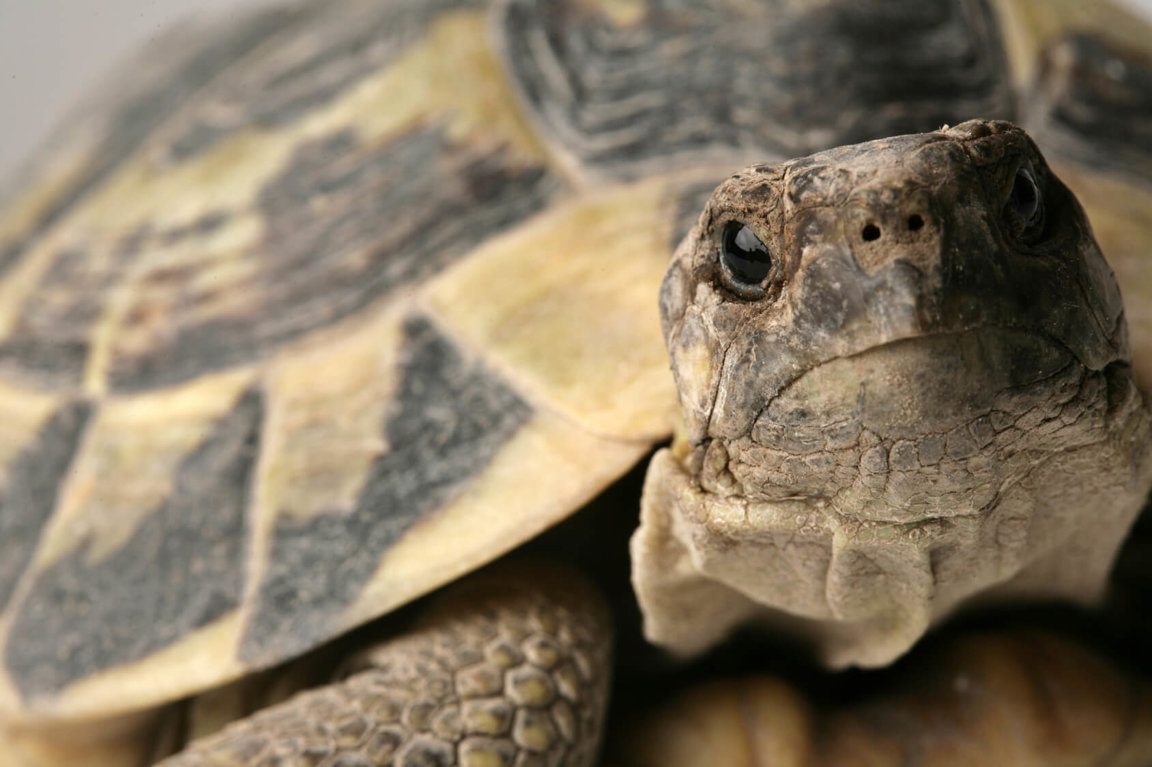
Turtles
Turtles are reptiles with hard shells that protect them like a shield. Their upper shells are called a ‘carapace’. Their lower shells are called ‘plastron’. The shell is made up of 60 different bones all connected together. Many turtle species are able to hide their heads inside their shells when attacked by predators. Their hard shells enable them to live without fast reflexes and elaborate predator avoidance strategies.
Turtles are highly intelligent and social animals. They sometimes switch between monogamy and promiscuity in their sexual behavior. They enjoy playing. They have good eyesight, hearing and an excellent sense of smell. Their shells contain nerve endings, aiding in their sense of touch.
Some aquatic turtles can absorb oxygen through their skin so they can remain submerged underwater for extended periods of time. They can even hibernate underwater.
The largest turtle is the leatherback sea turtle, which can weigh over 2000 lb. Several species of turtles can live to be over a hundred years of age, including the American Box Turtle.
Some turtles lay eggs in the sand and leave them to hatch on their own. The baby turtles make their way to the top of the sand and scramble to the water while trying to avoid predators. In some species of turtle the temperature determines if the egg will develop into a male or female. Higher temperatures lead to females; lower temperatures lead to males.
Most of the North American species of turtles available in pet stores have been taken from their natural habitats. Other species are usually captive bred—most likely in Louisiana, which has dozens of turtle factory farms. Most states have laws either banning or restricting the sale of turtles, so it is likely that any you see at a pet store have suffered illegal capture or were raised in less than humane conditions. Since parasites, bacteria, and fungi prey on weak or stressed turtles, the health of a store-bought turtle is questionable.
Just like any other reptile, a turtle’s needs are very specific: thermostatically controlled temperatures, enough water to swim in, a large housing area, and a varied diet. The average lifespan of an aquatic turtle is 25 years, while a land tortoise could outlive you.
There is a health risk associated with keeping any reptile. Seventy thousand people in the U.S. contract salmonellosis from direct or indirect contact with reptiles and amphibians every year. Children, pregnant women, and people with compromised immune systems are particularly at risk of serious illness or death. If you or anyone close to you is in one of these categories, rethink bringing a reptile into your home—even healthy-looking animals may be carrying the disease. Many reptiles are brought into the country with little or no inspection or quarantine.
Welcoming a reptile into your home means a commitment of time, space and money. You’ll need to provide the right temperature and humidity and specific light/dark cycles that may not coincide with your own or be convenient to you. Backup power is necessary to keep a constant temperature in the event of a power failure. In all, costs for food, an enclosure, lighting, and vet bills can total hundreds of dollars per year.
Purchasing a reptile caught in his or her natural habitat encourages the removal of wildlife from delicate ecosystems. Buying captive-bred animals only encourages breeders to replenish their stock. If you must have a reptile as a companion animal, adopt from a local shelter or rescue group.
